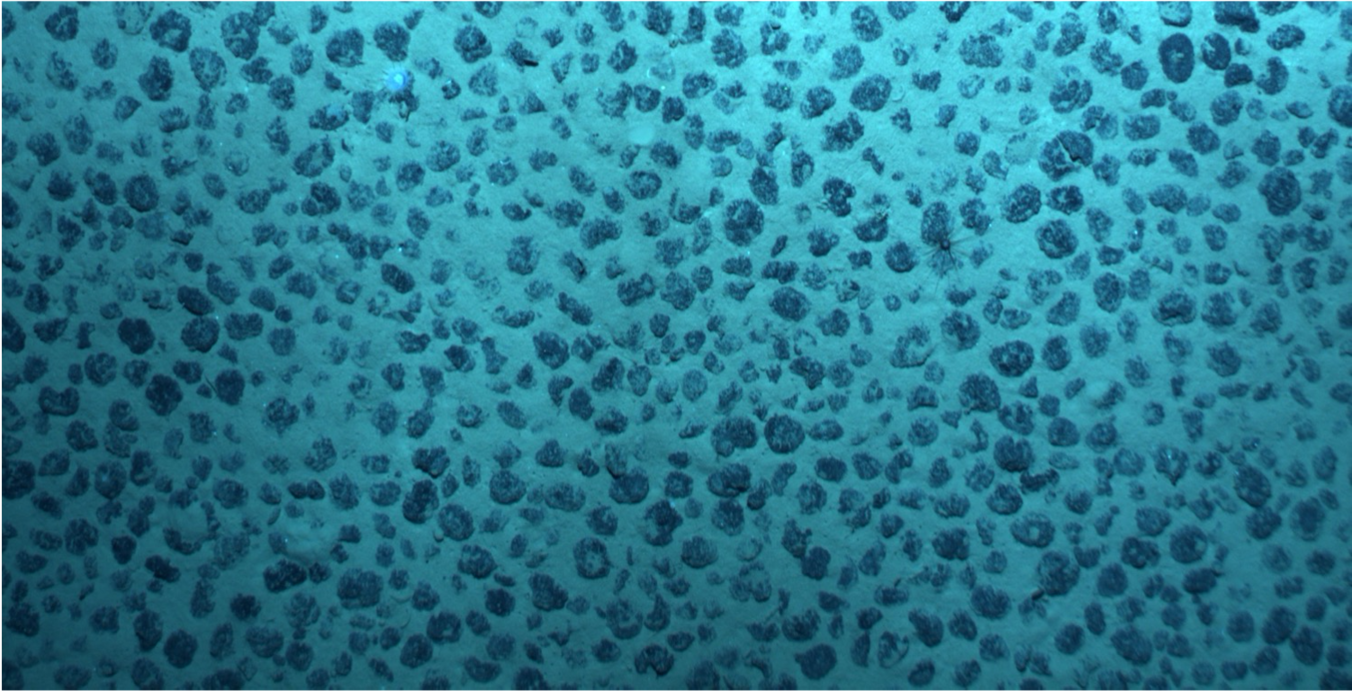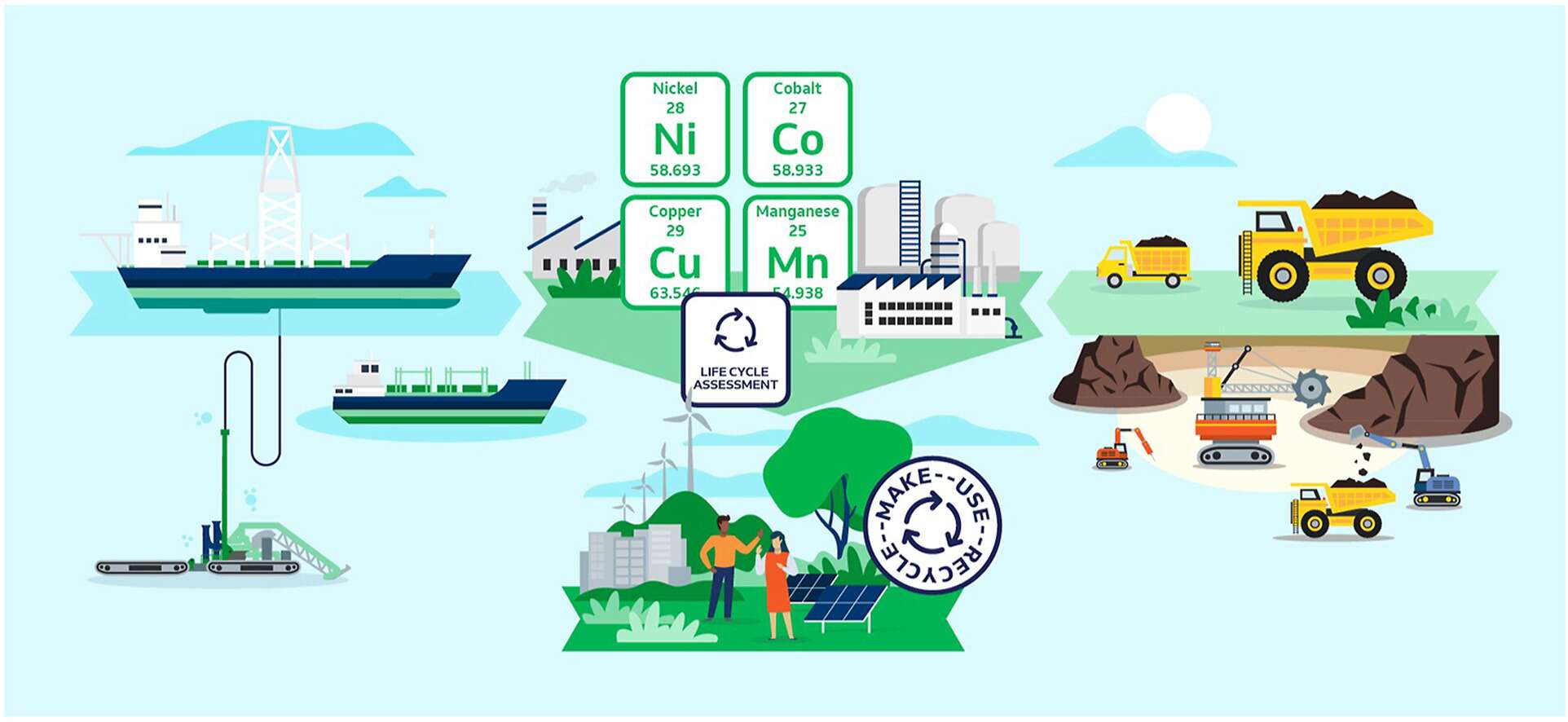
DEEP SEABED MINERALS COULD REDUCE C02 EMISSIONS BY 38% AND REDUCE ACIDIFCATION BY UP TO 72% COMPARED TO TERRESTRAL ALTERNATIVE
December 2, 2021
Scientific Publication
- Prospective life cycle assessment peer-reviewed paper published in Journal of Cleaner Production
- Researchers at Ghent University compared prospective environmental effects of polymetallic nodule collection with land based mining
- Deep-seabed minerals may contribute significantly to the growing demand for metals
 It is estimated that nodules found in the CCZ contain 1.2 times more manganese, 1.8 times more nickel and 3.4 times more cobalt than all known land-based reserves combined[4].
Nickel, copper, manganese and cobalt never appear all together in terrestrial deposits; two to three separate land-based mines are needed to extract them, suggesting that collecting polymetallic nodules may have environmental advantages. The purpose of the study was to explore that hypothesis.
The results should be interpreted with care due to the prospective nature of this study and the limited access to terrestrial mining data. Nonetheless, the study’s authors[5] say that the findings highlight “important potential benefits that commodities from deep-sea polymetallic nodules can bring to society”.
It is important to note that the study compared prospective deep seabed mining with current terrestrial mining operations. Since new sources of terrestrial minerals are likely to be in more remote and ecologically sensitive locations than existing mines, the importance of including deep seabed minerals in the mineral mix is further highlighted. All viable options for meeting future mineral requirements should be considered.
The study provides some of the evidence required for rational decisions to be made about how to meet future mineral demand in the most responsible way. Many gaps in knowledge remain, including an evaluation of comparative biodiversity and ecosystem services effects.
“This study supports the view that polymetallic nodules may be counted among the most responsible sources of minerals,” said Kris Van Nijen, managing director of GSR, the deep sea exploratory division of DEME Group. “However, many years of research lie ahead before any conclusions can be drawn and GSR will continue to take a cautious, step-by-step approach to project development and research.”
[1] Prospective Life Cycle Assessment of Metal Commodities obtained from deep-sea polymetallic nodules; Alvarenga, R.A.F. Preat, N; Duhayon, C.; Dewulf: 26 November 2021
[2] The Role of Critical Minerals in Clean Energy Transitions, IEA, May 2021
[3] Assessing the adequacy of the global land-based mine development pipeline in the light of future high-demand scenarios: The case of the battery-metals nickel (Ni) and cobalt (Co); Wouter Heijlena; Guy Franceschi; Chris Duhayon; Kris Van Nijen: October 2021
[4] Deep-ocean polymetallic nodules as a resource for critical materials, Hein et al: 2020
[5] The study was led by researchers at Sustainable Systems Engineering (STEN) in the Department of Green Chemistry & Technology of Ghent University.
It is estimated that nodules found in the CCZ contain 1.2 times more manganese, 1.8 times more nickel and 3.4 times more cobalt than all known land-based reserves combined[4].
Nickel, copper, manganese and cobalt never appear all together in terrestrial deposits; two to three separate land-based mines are needed to extract them, suggesting that collecting polymetallic nodules may have environmental advantages. The purpose of the study was to explore that hypothesis.
The results should be interpreted with care due to the prospective nature of this study and the limited access to terrestrial mining data. Nonetheless, the study’s authors[5] say that the findings highlight “important potential benefits that commodities from deep-sea polymetallic nodules can bring to society”.
It is important to note that the study compared prospective deep seabed mining with current terrestrial mining operations. Since new sources of terrestrial minerals are likely to be in more remote and ecologically sensitive locations than existing mines, the importance of including deep seabed minerals in the mineral mix is further highlighted. All viable options for meeting future mineral requirements should be considered.
The study provides some of the evidence required for rational decisions to be made about how to meet future mineral demand in the most responsible way. Many gaps in knowledge remain, including an evaluation of comparative biodiversity and ecosystem services effects.
“This study supports the view that polymetallic nodules may be counted among the most responsible sources of minerals,” said Kris Van Nijen, managing director of GSR, the deep sea exploratory division of DEME Group. “However, many years of research lie ahead before any conclusions can be drawn and GSR will continue to take a cautious, step-by-step approach to project development and research.”
[1] Prospective Life Cycle Assessment of Metal Commodities obtained from deep-sea polymetallic nodules; Alvarenga, R.A.F. Preat, N; Duhayon, C.; Dewulf: 26 November 2021
[2] The Role of Critical Minerals in Clean Energy Transitions, IEA, May 2021
[3] Assessing the adequacy of the global land-based mine development pipeline in the light of future high-demand scenarios: The case of the battery-metals nickel (Ni) and cobalt (Co); Wouter Heijlena; Guy Franceschi; Chris Duhayon; Kris Van Nijen: October 2021
[4] Deep-ocean polymetallic nodules as a resource for critical materials, Hein et al: 2020
[5] The study was led by researchers at Sustainable Systems Engineering (STEN) in the Department of Green Chemistry & Technology of Ghent University. 